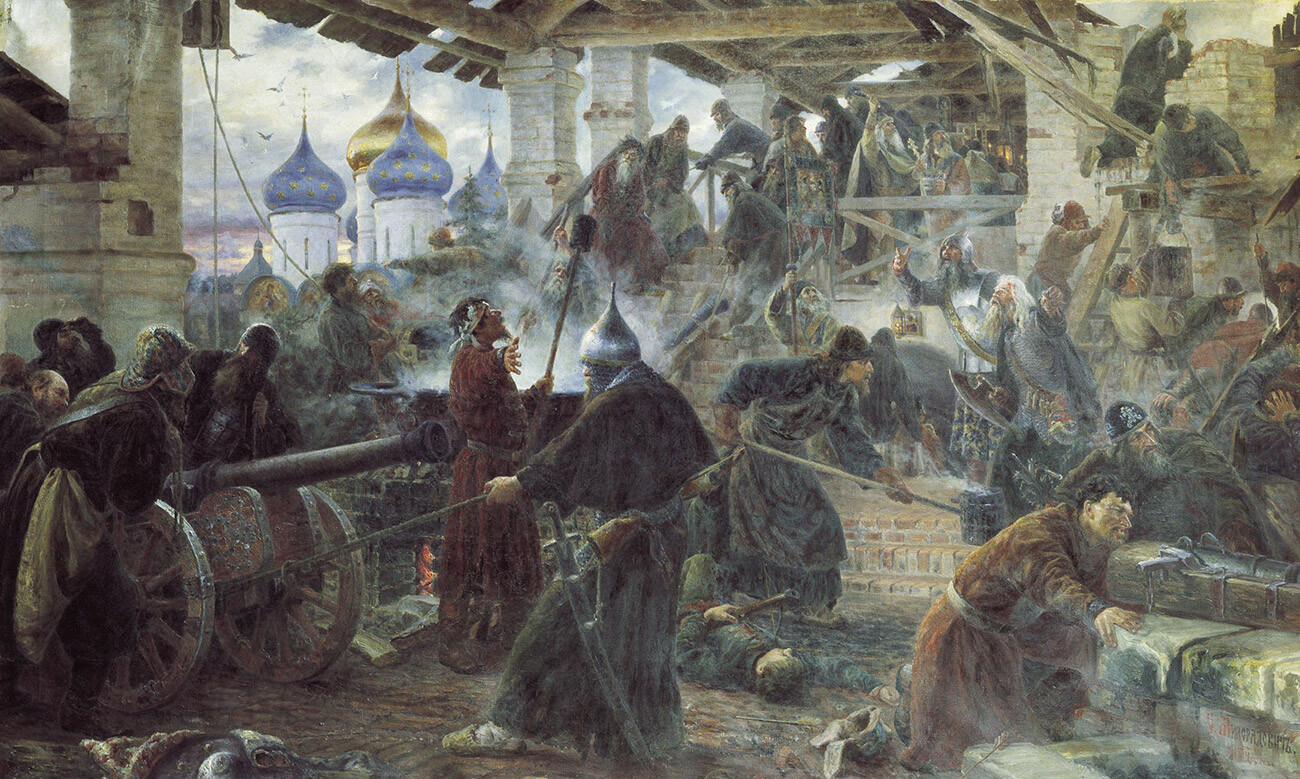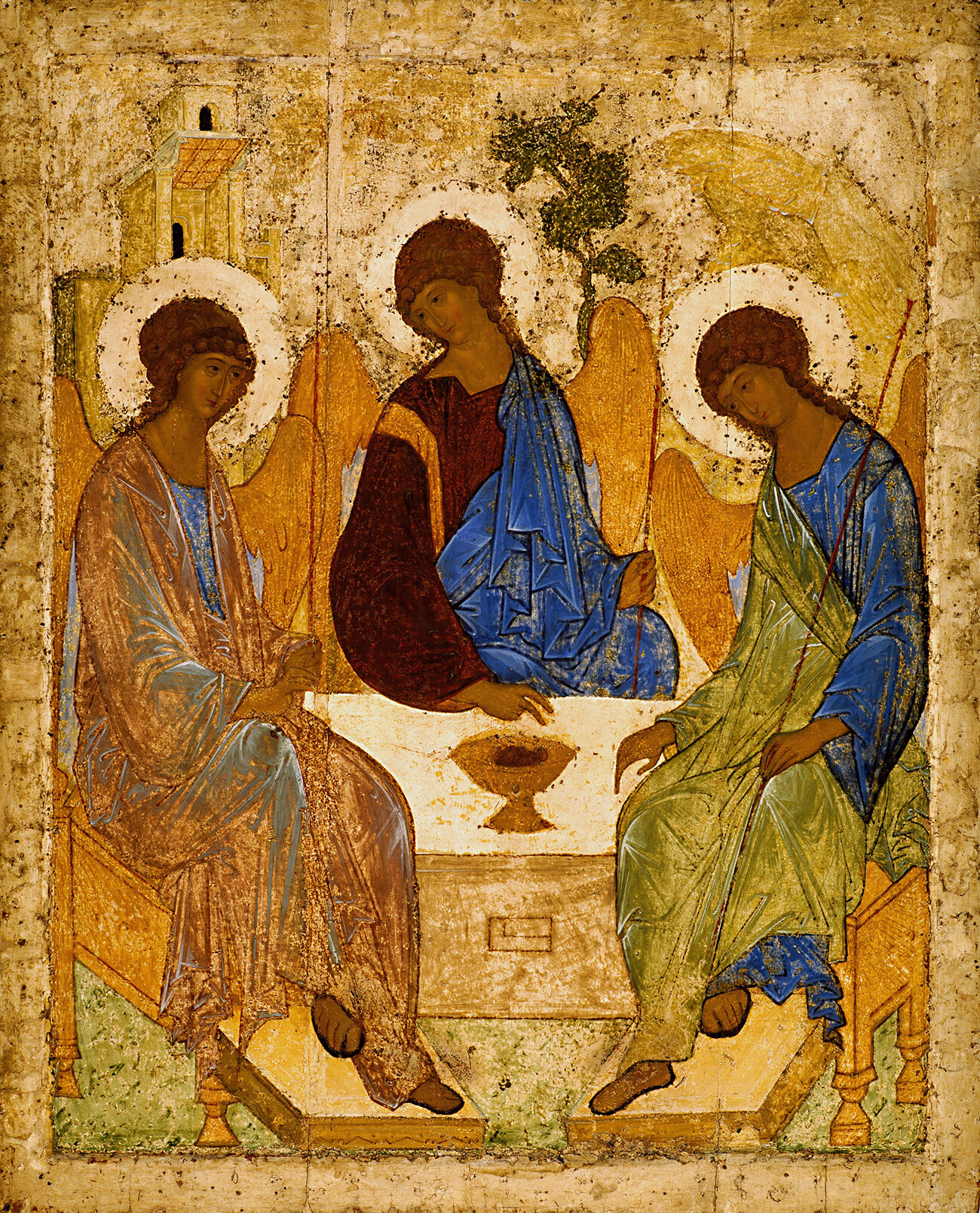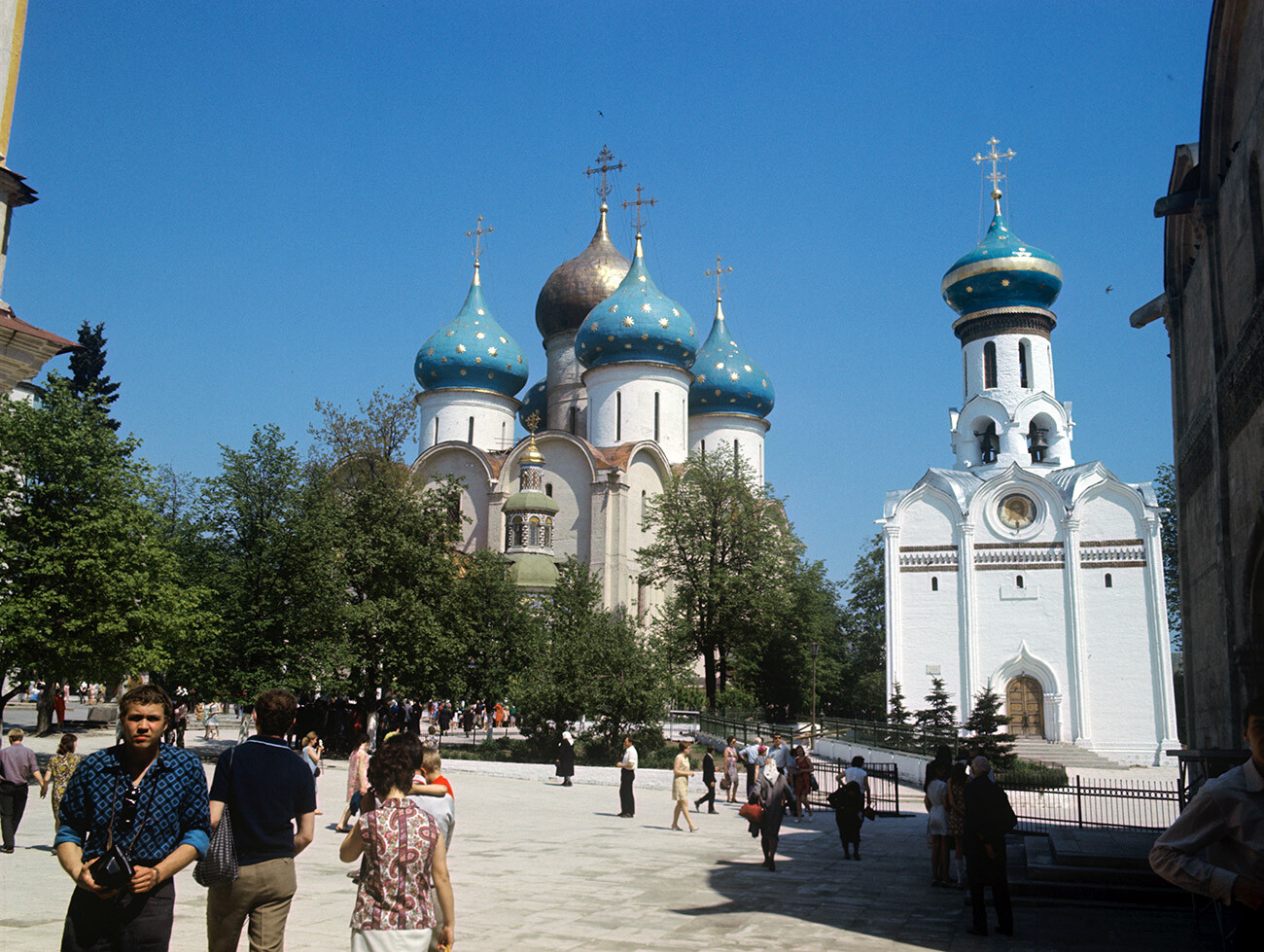5 facts about St. Sergius Trinity Lavra, Russia’s main monastery (PHOTOS)

1. The monastery was founded by St. Sergius of Radonezh
It is not by chance that the monastery is called ‘Sergius Trinity Lavra’. It was founded by Sergius of Radonezh, a monk who lived in the 14th century and, later, became one of Russia’s main saints. While still very young, Sergius chose the path of a hermit and, together with his older brother Stephen, settled in a remote forest, where he built a small hut and a chapel in honor of the Holy Trinity.
 St. Sergius blessing
St. Sergius blessing
Soon, Stephen left Sergius. The hagiography of the saint tells how demons frightened Sergius while he lived alone in the small hut in the middle of the forest. But, through prayer and strength of spirit, he overcame the fear. The miraculous monk, who had defeated the evil power, became famous and rumors about him spread. So, other monks began to flock to the monastery, as well as ordinary people, seeking comfort and hope in the midst of the horror of the Tatar-Mongol invasion. The date of the foundation of the monastery is considered to be 1342.
Historian Vasily Klyuchevsky believes that Sergius contributed to the beginning of the moral and political revival of the Russian people. After the fragmentation of Russia and centuries of Tatar-Mongol domination, it was Sergius and his monastery that became the center of spiritual unification of the country.
2. Played an important role in the political & military life of the country
 Sergei Miloradovich. “Defense of St. Sergius Trinity Lavra against the Poles in 1610,” 1894
Sergei Miloradovich. “Defense of St. Sergius Trinity Lavra against the Poles in 1610,” 1894
Because of the regular invasions of the Mongols, entire Russian cities and principalities were plundered, burned and laid in ruins. Moscow Prince Dmitry Donskoy was the first who had the courage to finally fight back the enemy and gathered an army, uniting with other Russian princes. And he went to Sergius for support. The abbot blessed the prince and even sent two of his warrior monks, Peresvet and Oslyabya, to the ‘Battle of Kulikovo’. The victory of the Russian army in this 1380 battle marked the beginning of the liberation of Russia from foreign domination and the unification of the Russian lands under the rule of Moscow.
After that, the St. Sergius Monastery was not once in the epicenter of historical events. During the reign of Ivan the Terrible (who was baptized in this monastery), mighty walls were built around the cloister and it became a fortress to protect Moscow from the approaches of the Kazan Khanate. In the early 17th century, during the ‘Time of Troubles’, the monastery was under siege for more than a year, surrounded by the troops of Polish invaders and the impostor False Dmitry. The monastery invested a lot of money to support the militia of Minin and Pozharsky in the struggle for Russian independence.
In the late 17th century, Peter the Great sheltered there from political opponents. Under Elizabeth Petrovna in the 18th century, several new churches in the Baroque style were built there. Now, they complement the ensemble of the main Holy Trinity Cathedral of the 15th century and later buildings.
 Panorama of St. Sergius Lavra: Assumption Cathedral with blue domes, the 18th-century bell tower, and the Church of St. Sergius with the refectory in the foreground
Panorama of St. Sergius Lavra: Assumption Cathedral with blue domes, the 18th-century bell tower, and the Church of St. Sergius with the refectory in the foreground
Also, the empress granted the monastery the status of a ‘lavra’, that is, the most important spiritual center, a monastery with special significance. Today, there are only two lavras in Russia (the other one is in St. Petersburg and you read about it here).
3. There was a fundamentally new type of monastic dormitory
 A priest pictured in front of the Lavra in Sergiev Posad
A priest pictured in front of the Lavra in Sergiev Posad
Previously, monks had wandered around Russia and lived mainly on alms (money or food given to poor people). But, Sergius changed this habitual way of life for the first time. He forbade his monks to leave the monastery; they worked and fed themselves and if there was nothing to eat, they prayed even harder for the sending of “daily bread”.
When new monks arrived at the monastery, Sergius took them under his wing, taught them good morals and watched each one carefully, so that they prayed diligently and did not fall prey to the temptations of worldly life. Everyone had a strict daily schedule; everyone, including Sergius himself, worked tirelessly - they built churches, cooked food, chopped wood and sewed clothes and fully provided for themselves.
At the same time, Sergius fostered a real brotherhood, which showed the laity an example of Christian fellowship. Since the 15th century, Sergius has been honored in Russia as a Venerable saint for his monastic asceticism; that is, as a monk who strove to be like Jesus Christ through prayer, fasting and labor. Now, Sergius is honored as a saint not only by Orthodox Christians, but also by the Old Believers and Catholics. In addition, the Moscow Theological Academy is located within the walls of the lavra and seminarians still live there.
4. The main Russian icon, Andrei Rublev's ‘Trinity’, was born there
 Andrei Rublev. The Holy Trinity, 1422-1427
Andrei Rublev. The Holy Trinity, 1422-1427
The first chapel of the future monastery was dedicated to the Holy Trinity and, later, the monastery was named in honor of the Trinity. In the first half of the 15th century, the second hegumen (the equivalent of an abbot) of the monastery and disciple of Sergius asked famous iconographer Andrei Rublev to paint an image of the Holy Trinity. His icon, painted between 1422 and 1427, became the most important church relic and a masterpiece of Russian religious art. Rublev was the first who managed to formulate in artistic language the most important Orthodox postulate about the divine trinity.
The icon, measuring 141.5 x 114 centimeters, became one of the main sacred objects of the monastery (in addition to the relics of Sergius) and was located on the iconostasis of the Trinity Cathedral. In 1929, Soviet authorities transferred the icon to the Tretyakov Gallery, where it was kept in special conditions for many years, while a copy was later made for the monastery.
But, in 2023, by decree of the President of the Russian Federation, the icon was returned to the Russian Orthodox Church. Now, it is temporarily housed in the Cathedral of Christ the Savior; however, on the feast of the Trinity on June 23, 2024, it will be moved to the St. Sergius Trinity Lavra.
5. During Soviet times, it was a “showcase” of the Russian Orthodox Church
 Lavra's Assumption Cathedral, 1971
Lavra's Assumption Cathedral, 1971
Many churches and monasteries were closed and destroyed in the Soviet times, but the St. Sergius Trinity Lavra was not so badly affected. None of the ancient buildings were seriously damaged. In 1919, the monks were dissolved and the monastery was closed, many church valuables from precious metals were seized and melted down, including the largest working tsar bell at that time (it was restored in the 2000s).
But, Soviet authorities realized that the monastery had a significant historical value. Within its walls, a historical and architectural museum opened almost immediately. Throughout the whole of the 20th century, it was besieged with restorations. Fittingly, a restoration school was also opened in the St. Sergius Trinity Lavra.
In the 1940s, Stalin softened his position on the church, defacto rehabilitating Orthodoxy in the USSR somewhat. And monastic life was revived in the St. Sergius Trinity Lavra, with the first hegumen becoming Patriarch Alexy I.
The St. Sergius Trinity Lavra soon became a kind of showcase of Orthodoxy for foreigners in the USSR. All delegations and tourists were taken there to have a look at all the "exotics". And, although services were resumed, the life of the monastery was completely under the control of the Soviet authorities. Only in the 1990s did the monastery return under the Church's jurisdiction and it's still very much a spiritual center and an important place for all Orthodox Christians.


